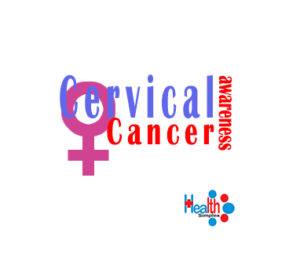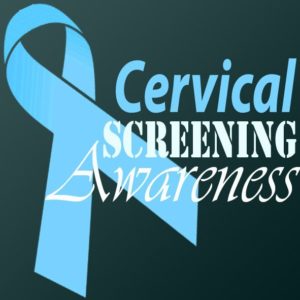
20 Aug Cervical screening today may buy you more years in life.
In recent years the term cancer has dominated the media with various bodies trying to raise awareness to this medical condition which has sent a lot of persons to early graves, left so many others in critical medical conditions while not sparing their pockets as the quest for survival gulps away life savings and investment impoverishing a large number of people on a daily basis.  Cancer is a growth of tissue that has lost control, grows with out limitations while preying on scarce body resources, hence starving the whole body with an ability to spread to other body parts like a crab spreads its limbs an act from which it derives its name while it continues
Cancer is a growth of tissue that has lost control, grows with out limitations while preying on scarce body resources, hence starving the whole body with an ability to spread to other body parts like a crab spreads its limbs an act from which it derives its name while it continues
this abnormal growth in its new found focus. Over the years women have been most affected especially from cancers involving reproductive tissues and organs with breast and cervical cancer topping the chart. Cervical cancer remains peculiar considering its long onset time hence the ability of nipping it in the bud if detected early, why it continues to raise its head as one of the commonest occurring cancers beats man’s imagination since it takes a whooping 10yrs to develop and become a problem of which it remains highly curable at this time and even some 2-3yrs after onset.
Cervical cancer is the 2nd commonest cancer in women, it is preceded by its premalignant or precancerous form years before its invasion.
Screening for this premalignant disease of the cervix helps reduce death from cervical cancer.
WHAT IS CERVICAL CANCER:
The cervix is the lower part of the uterus. Cervical cancer starts in the cells lining the cervix. There are two types of cells lining the cervix- squamous cells and glandular cells. These cells meet at the transformation zone. The exact location of this zone changes with age and child birth. Most cervical cancers start at the transformation zone. The transformation to cancer cells takes years, it is transformed first to premalignant cells which is the form detected by early cervical cancer screening.
Although cervical cancer starts from cells with premalignant changes, only some women with premalignant changes will develop cancer, for some women, premalignant cells may remain unchanged without treatment. In some, the premalignant cells become malignant in less than a year. Treating all pre-cancers will prevent almost all true cancers.
EPIDEMIOLOGY:
Occurs in the 5th -6th decade of life (50-60 years) at an average age of 54. Premalignant changes occur in women under 40 years.
RISK FACTORS:
i. Early age at first sexual intercourse.
ii. Multiple male sexual partners.
iii. Early age at first child birth.
iv. Male sexual partners who themselves have multiple sexual partners.
v. Long term use of oral contraceptive pills.
vi. Smoking: tobacco bye-products have been found in cervical mucus of women who smoke.
vii. Human papilloma virus (HPV): This can spread from one person to the other mostly through sex; vaginal, oral, anal. There are different types of HPV but the ones that predisposes to cervical cancer are HPV 16, 18, 31, 33, 45.
viii. Immunosuppression: HIV/AIDS, Hodgkins lymphoma, renal-allograft transplants etc. Depreesed immune system puts women at a higher risk of HPV infection. Also in women with HIV, the immune system which helps to detect and destroy abnormal cells is weakened, hence permits the spread or development of cancer.
ix. Over weight women.
x. Having multiple full term pregnancies, this is because the hormonal changes in pregnancy may make it possible for women to be more susceptible to HPV infection.
xi. Family history of cervical cancer: If a woman’s mother or sister had cervical cancer, her chances of developing it are 2-3 times higher.
xii. Low socio-economic class.
SIGNS AND SYMPTOMS:
Women with early cervical cancers and pre-cancers don’t usually have symptoms. Symptoms are mostly seen when the cancer invades into a nearby tissue but most of these symptoms though seen, might be caused by other conditions other than cervical cancer. When this happens, the common symptoms seen are:
i. Abnormal vaginal bleeding eg:
- bleeding after vaginal intercourse.
- post-menopausal bleeding.
- bleeding and spotting in between periods.
- heavier or longer periods.
ii. Vaginal discharge which may contain some blood.
iii. Deep Dyspareunia: Pain during sex.
CAN CERVICAL CANCER BE PREVENTED?
i. Safe sex: Condom can provide some protection from HPV but this virus can be found in other sites like skin of the genital area or anal area, condom doesn’t cover these areas and HPV can be passed through skin to skin contact. Also, avoid sharing sex toys.
ii. Avoid smoking.
iii. Get vaccinated: Vaccines are available against certain HPV infections and they help prevent pre-cancers and cancers of the cervix. Recommended for both males and females between 13-26 years only.
CERVICAL CANCER SCREENING!!!
WHAT IS CERVICAL CANCER SCREENING:
This is a process of identifying those asymptomatic individuals who are at an increased risk of developing the cancer and refer them for further investigations and treatment. Screening does not necessarily diagnose the condition but it helps in early detection and reduction of deaths due to cancers.
RATIONALE FOR CERVICAL CANCER SCREENING:
i. Invasive disease is preceded by cervical intra-epithelial neoplasia (CIN)
ii. Early detection and treatment of CIN prevents progression.
iii. Women at risk of having CIN can be easily detected.
iv. Cervical cancer is the 2nd common cause of cancer related deaths in women worldwide.
METHODS OF SCREENING:
i. Papanicolau smear (pap smear).
ii. Liquid based cytology.
iii. Cervicography.
iv. HPV testing (serotype 16, 18,31, 33)
v. Colposcopy.
vi. Thin prep pap test.
vii. Folic acid receptor-mediated detection kits.
WHEN SHOULD ONE START SCREENING?
i. Women 21-29 years should go for screening every 3 years. Don’t begin until 21 regardless of age of first intercourse.
ii. Co-testing: This is a combination of cytology (Pap smear) plus HPV test, should be done for women 30 years and above, once every 5 years.
iii. Stop screening for women 65 years and above if there have been previous negative results. Women who have been treated for CIN must be regularly screened for 20 years, even if 65 years or older.
OTHER CASES:
i. Women in whom co-testing shows a negative Pap smear but a positive HPV test should have a 12 month follow up co-testing.
ii. Women with atypical squamous cells of undetermined significance on Pap smear but a negative HPV test can be rescreened with co-testing in 5 years or have a repeat cytology alone in 3 years.
iii. HIV positive women younger than 30 years can now undergo cytology testing once every 3 years as long as they have had three consecutive normal annual cytology tests. HIV positive women older than 30 years can undergo testing with cytology alone or co-testing.
iv. American Congress Of Obstetricians and Gynecologists (ACOG) recommends against co-testing for women under 30 years. They also advice against screening before age 21 unless the woman is HIV positive. This is because only 0.1% of cases of cervical cancer can occur before the age of 20.
v. Women who have had total hysterectomy (removal of the uterus) may stop undergoing cervical cancer screening, except if the woman had a hysterectomy without removal of the cervix or she has had cervical carcinoma at any time or have been treated for CIN grade 2 or 3 in the past 20 years.
Remember, cervical cancer is the second most commonest cause of cancer related deaths in women worldwide. Unfortunately, only 2 out of 5 women in Nigeria have heard about cervical cancer screening and out of this 2, only one has actually had the screening.
Knowledge is power. Go for your cervical screening today.





Francis Chidi
Posted at 13:36h, 25 AugustWell said and well read….Histones from semens have been implicated as a cause as regard to early exposure to sex,hence my take,if we cannot raise our children to desist from premarital sex/abstinence at least let them wear condoms. It saves a lot …unwanted pregnancy leading to abortion, Hepatitis B,STIs,etc.